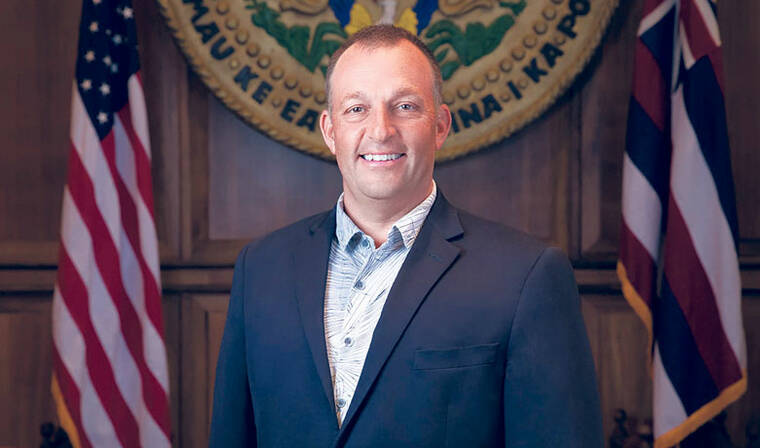Hawaii health care workers’ student loans to be paid
Just in time for Christmas, the state told 492 Hawaii health care workers this week that it will pay off their student loans — up to $100,000 — in return for a two-year commitment to stay in the islands.
The next period of applications for even more Hawaii-based health care workers — and even expats on the mainland — is scheduled to open July through August. That round will pay off student debt of up to $50,000 for each of two years for 1,000 more health care workers like physicians, nurses, mental health specialists and social workers.
ADVERTISING
Gov. Josh Green on Friday thanked the state Legislature for providing a historic $30 million to fund the program — along with an additional $5 million contribution from Lynn and Marc Benioff to pay off student loans for health care workers specifically on Hawaii Island, where the Benioffs have a home. Marc Benioff is co-founder, chairman and CEO of Salesforce and owns Time magazine.
Green plans to solicit similar contributions from other benefactors to pay off even more student loans and wants the Hawaii Healthcare Education Loan Repayment Program — or H.E.L.P. — to become a national model and make Hawaii the only state in the country without a health care worker shortage in approximately five years.
“Hawaii is the health state,” Green said.
Health care workers who get their loans paid off also must agree to treat 30% of patients who receive Medicaid or Medicare, which Green said applies to “almost the entire state” — or “people who are struggling.”
Green said his staff calls him the “health care recruiter in chief.”
Of the 492 health care workers this week who will have their loans paid off, Dr. Lee Buenconsejo-Lum — interim dean of the University of Hawaii’s John A. Burns School of Medicine, which administers the H.E.L.P. program — said 40 are residents in training, and 10 are on the mainland “and are now committed to coming home sooner than they would have.”
Green is America’s only sitting governor who’s also a medical doctor.
He started his Hawaii medical career in rural Ka‘u on Hawaii Island treating low-income families through the National Health Service Corps.
Friday’s update coincided with his own final payment of his medical debt of $140,000, which translated into $315,000 total of debt service.
At the age of 53, Green said, “I’ve been ticking away at that debt for 30 years. I’m debt-free today.”
“This program is something special to me,” Green told reporters Friday in his fifth-floor conference room.
Since announcing the program in September, he said the most common questions he gets are from Hawaii parents who want to bring their health care worker sons and daughters home from the mainland, where they landed “because they can’t afford a house” in Hawaii.
“A lot of parents have been calling me” or stopping him to talk in Ala Moana Park, Green said. “That’s the most common version of the conversation.”
He tells parents to have their children on the mainland apply, and if their debt and local connections are verified, “they’ve got a really good shot of getting approved.”
The loan payment program received over 500 applications in just the first four weeks.
“It was shocking how many people applied, ” Green said. “It was almost immediate.”
For patients, especially those underserved in rural parts of Oahu and the neighbor islands, he said, “It means people will live longer.”
Buenconsejo-Lum said the 900 other applicants who were not initially accepted will be “deferred” to the next round.
The first group represented Hawaii-based health care workers with outstanding student debt of well over $100,000 and as high as $500,000.
During the COVID-19 era, Hawaii spent $150 million to import traveling nurses and doctors and other health care professionals who would not have been necessary if Hawaii had enough health care workers.
It also reinforced the need to have more health care workers already here who understand the community, Green said.
The COVID-19 pandemic also sped up health care retirements and “burnout and fatigue,” exacerbating the shortage.
Dr. John Misailidis, who is double board-certified in internal medicine and pediatrics, arrived in Hawaii in 2011 for his residency through the UH medical school under the weight of $250,000 in student loan debt.
Receiving word that Hawaii will pay off $100,000 of his debt— especially right before Christmas — left Misailidis “extremely grateful.”
“I really fell in love with the people here,” he said. “I love the local culture … and I’m really grateful to be able to stay.”


